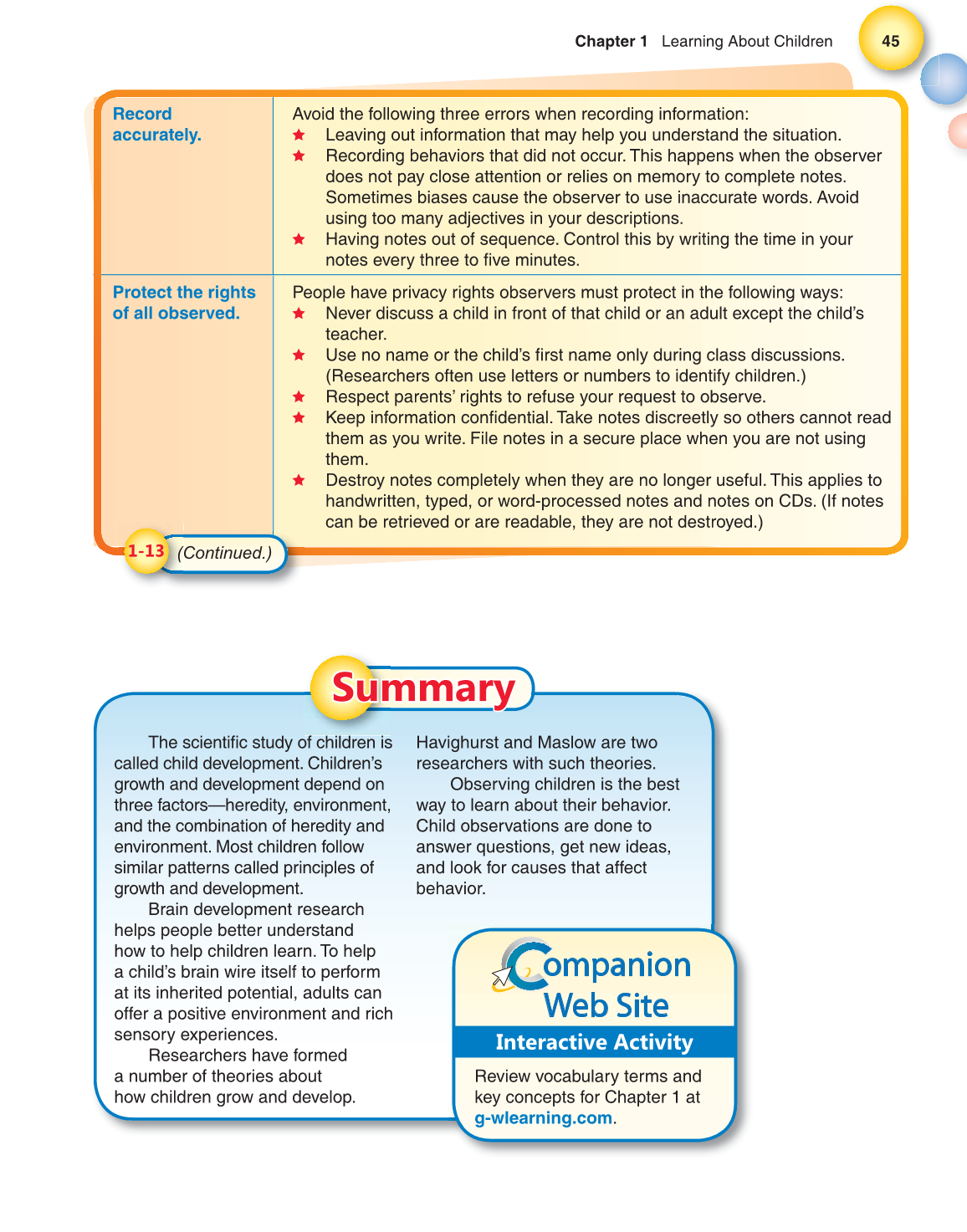45 Chapter 1 Learning About Children
Record
accurately.
Avoid the following three errors when recording information:
Leaving out information that may help you understand the situation.
Recording behaviors that did not occur. This happens when the observer
does not pay close attention or relies on memory to complete notes.
Sometimes biases cause the observer to use inaccurate words. Avoid
using too many adjectives in your descriptions.
Having notes out of sequence. Control this by writing the time in your
notes every three to fi ve minutes.
Protect the rights
of all observed.
People have privacy rights observers must protect in the following ways:
Never discuss a child in front of that child or an adult except the child’s
teacher.
Use no name or the child’s fi rst name only during class discussions.
(Researchers often use letters or numbers to identify children.)
Respect parents’ rights to refuse your request to observe.
Keep information confi dential. Take notes discreetly so others cannot read
them as you write. File notes in a secure place when you are not using
them.
Destroy notes completely when they are no longer useful. This applies to
handwritten, typed, or word-processed notes and notes on CDs. (If notes
can be retrieved or are readable, they are not destroyed.)
The scientifi c study of children is
called child development. Children’s
growth and development depend on
three factors—heredity, environment,
and the combination of heredity and
environment. Most children follow
similar patterns called principles of
growth and development.
Brain development research
helps people better understand
how to help children learn. To help
a child’s brain wire itself to perform
at its inherited potential, adults can
offer a positive environment and rich
sensory experiences.
Researchers have formed
a number of theories about
how children grow and develop.
Havighurst and Maslow are two
researchers with such theories.
Observing children is the best
way to learn about their behavior.
Child observations are done to
answer questions, get new ideas,
and look for causes that affect
behavior.
Summary
ompanion
Web Site
Interactive Activity
Review vocabulary terms and
key concepts for Chapter 1 at
g-wlearning.com.
1-13
(Continued.)
